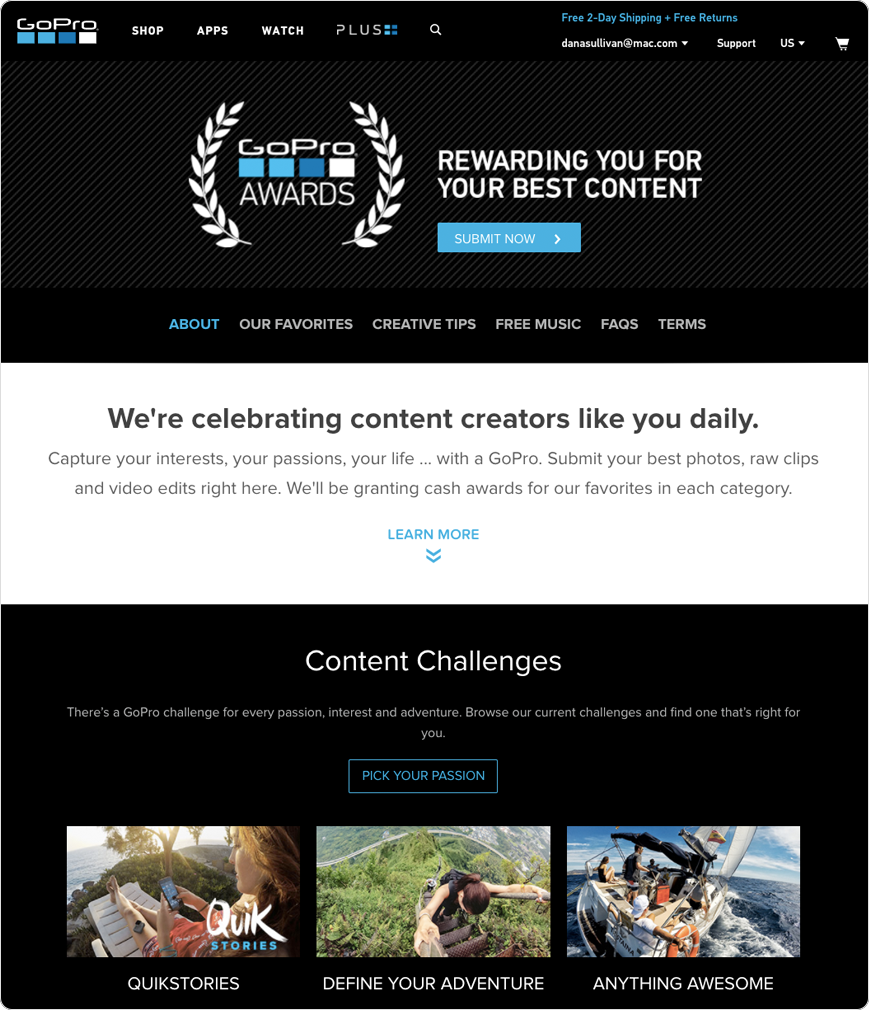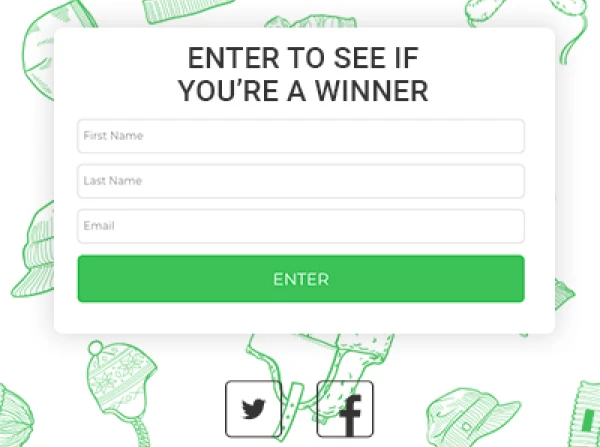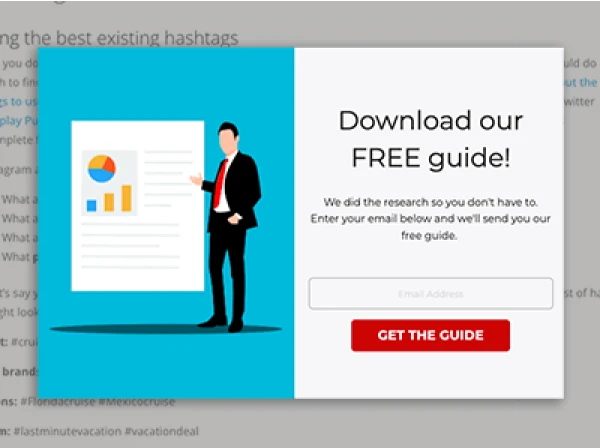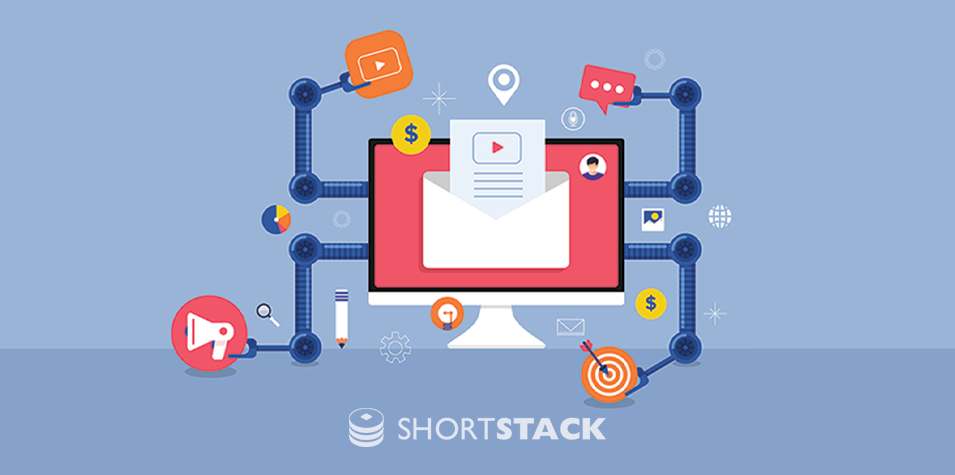So you’re looking for simple ways to build a bigger following on social media. Or maybe you’re looking for a way to collect user-generated content (UGC) to use for marketing. Either way, a UGC hashtag contest may be just what the CMO ordered.User-generated content hashtag contests are really popular at the moment, and for good reason. They’re easy to run, tend to get shared a lot and can be easier to manage than some other kinds of promotions. What’s more, they’re relatively simple to prepare. Hashtag contests can help you build brand awareness, increase engagement with consumers and ultimately increase sales. (By the way, UGC hashtag contests are different from “tag a friend,” “like,” or “comment to win” contests.)
Hashtag contests can help you build brand awareness, increase engagement with consumers and ultimately increase sales.
Here’s what you need to know to get a hashtag contest up and running, followed by some ideas for how to use the UGC you collect.
First, what is a UGC hashtag contest?
A UGC hashtag contest is a giveaway for which a business asks its followers to post a piece of content on a social network, accompanied by a specific hashtag, in exchange for a chance to win a prize. The user’s content might be a photo, video, review, or even some text, like a recipe. Each time someone posts anything containing the unique hashtag, they’re entered to win a prize. A winner is chosen either at random (technically making the contest a “sweepstakes”) or by criteria the brand decides, such as by number of votes, or by letting a panel of judges choose the winner.
Where to run a hashtag contest
While hashtags can be used on Twitter, Instagram, Pinterest, YouTube, Facebook, etc., they are a fundamental part of the Instagram and Twitter experience so you’ll be better off if you focus your contest efforts on these platforms.
Twitter is where hashtags really took off and it’s helpful to understand the origin of hashtags, even in the context of contests. When Twitter launched, the company’s founders used hashtags as ways to organize conversations and make certain topics easy to find. Let’s say you were in San Francisco looking for a great place to eat dim sum and you wanted to see what other dim sum fans were recommending. You’d type both #sanfrancisco and #dimsum into the Twitter search bar and Twitter would show you only posts that include both hashtags. That’s still how hashtags work. So, to run a promotion on Twitter, you’d do the same thing: require people to use your hashtags in their post in order to be be entered to win whatever prize you’re giving away.

To run a hashtag contest on Instagram, you simply create a unique hashtag (more on this below), and then ask participants to use your hashtag in the caption that accompanies their image or video. The the caption can include as many characters as you want while on Twitter you’re limited to 140 characters. In this example, the Empire State Building is giving away $5000 to someone who has taken a photo touching the building.

Planning your hashtag contest
While hashtag contests might be easy to set up, you’re more likely to meet your goals if you think about what you want to accomplish, and then use the best tools to help you meet your goals. Here’s a quick look at a few things to remember:
1. Don’t violate trademarks
It may sound obvious, but you can’t use another company’s name in your hashtag. That’s not the only thing to consider. Increasingly companies are trademarking hashtags that don’t include their brand name, like Mucinex’ #blamemucus. Bottom line: Do some research to ensure you’re not co-opting a company’s trademarked material.

2. Make your contest hashtag(s) easy to remember
Creating hashtags that aren’t too long, too hard to remember, or too difficult to spell, can be easier said than done. While there are plenty of generic hashtags that can help bring attention to your contest, you also want one or two that will set your brand apart.You can browse this list to find the most popular hashtags and include a couple in your post, but creating your own unique hashtag will be a little more challenging. Some great contest hashtags we’ve seen lately come from the Cruise Line International Association which used #cruisesmile for a recent giveaway, and Dwayne Johnson (aka “The Rock”) who used #slowmochallenge for a contest linked to the premiere of “Baywatch.” To keep things really simple, you could just use #[yourbrand]contest.

3. Always include a branded hashtag
Some brands create unique hashtags that catch on with their followers and can be used for contests and for general posts. PetSmart, for example, uses #petsmartcart in many of its own posts, and PetSmart customers have also adopted the hashtag.

For a contest, you might have your shortterm contest hashtag (#[yourbrand]contest), and then also include your branded hashtag (the one that accompanies every post). Hilton, the hotel brand, includes a simple #hilton in its posts, and its customers frequently use it as well. You could also use your company’s tagline, or the name of a flagship product. Most important, think about whether the hashtag will appeal to your customers.
4. Don’t go overboard
Hashtags can be hard to resist. But don’t go too crazy with them. Yes, Instagram allows you to post up to 30 (and there are ways you can include even more than that) but there aren’t many situations that would call for maxing out like this. Instagram posts that use nine hashtags get 2.5 times more engagement , in the form of likes and comments, than posts with one hashtag.
5. Write and post rules
Posting rules will ensure that anyone who enters your promotion understands the guidelines and limitations you require. You might want to limit entries to certain regions, or have minimum age requirements, and you might want to limit how many times a person can enter. Host all of these details on a landing page, rather than as a comment or caption. That way your post will look much cleaner, and you’ll be able to add all the details you want.Before you write rules, understand the differences between sweepstakes and contests. A contest is a promotion in which effort, skill, or merit is required to enter to win a prize. For example, you may require people to upload a photo or video in order to enter but have the winner determined by voting or other judging criteria. The element of chance must not exist in a contest. A sweepstakes is a promotion in which entrants can win a prize based on chance. No other consideration is permitted and the winner is picked at random. The element of consideration must not exist in a sweepstakes.You can learn more about the differences in this post, and you’ll also find a template that will help you write your own hashtag contest rules.
6. Award extra chances to win by adding a form
One of the reasons hashtag contests are so popular is that they’re easy to enter -- as noted above. But if you’re interested in collecting email addresses -- leads -- to use for future marketing, you might consider adding a form to your contest since you may have some customers who don’t use Instagram or Twitter. People can still enter by uploading an image using your specific hashtag, but if you also create a simple landing page where people can enter, you’ll get even more participation and can offer extra chances to win to those who are willing to fill out form and share the contest.

This was built using ShortStack's Instagram Hashtag Giveaway template
7. Decide ahead of time how you will choose a winner
When it comes time to choosing a winner, you have a few options. Software platforms, like ShortStack, can pull all your hashtag entries into a feed from which you can use a random entry picker tool to choose a winner. You can also let votes determine the winner. Or you can simply choose the one you like best, ideally based on some criteria you specified in your rules -- like funniest, most creative, etc.

This was built using ShortStack's Instagram Hashtag Vote Contest template View and Create Your Own.
8. Get rights
If you’re hosting a hashtag contest, one in which people enter by using your designated branded hashtag, you have the users’ implied permission to use what they post but it’s still a best practice to ask for their explicit permission. This topic is worthy of a post of its own, and luckily we have one where you can learn everything you need to know about rights management.
After the contest: How to use the UGC you collect
Once your hashtag promotion is over, and you’ve chosen a winner, you should have collected a nice pile of user-generated content to use in your marketing efforts. Since sharing UGC is a proven way to increase engagement, build trust and drive sales, your next best step is to start creating and sharing stories around the material you collected.Below are three things you can do with the UGC you collect.
Sharing UGC gives you a unique opportunity to connect with your customers, and an increasing number of consumers say UGC is more “trustworthy” than content created by a brand’s marketing department.
Increase brand awareness
If there is a poster child for UGC marketing, it’s GoPro. The camera company has UGC campaigns running pretty much nonstop and the strategy has worked wonders for them. People who use the camera to film, well, whatever they happen to be doing, are encouraged to upload their footage on GoPro’s website into one of many categories (Travel, Family, etc.). The users who “win” the awards get their content published on GoPro’s website and various social channels. GoPro also offers prizes and cash for people who win their “content challenges.”The winning videos and photos often get hundreds of thousands of views, likes, etc. Any business could do something similar, showcasing the best entries either on existing social channels, or on one you set up for the express purpose of promotion your users’ content.

Develop brand advocates
Fashion and beauty brands, in particular, are very savvy about recruiting users to serve as brand advocates. Take Urban Outfitters. Urban Outfitters’ customers show off their style on their own feeds using hashtags like #UOHome and #UOBeauty. Then Urban Outfitters curates the posts and pulls the ones they like onto a shoppable web page where customers can see how people are wearing and using various products. Would you be more likely to purchase from a sterile image like this, which is on Urban Outfitter’s website:

Or from this post, which appears on Urban Outfitter’s shoppable community page:

I’m guessing most women would find the casual shot more compelling than the studio version.
Start building an engaged community
Social media allows brands to connect with their customers instantly and authentically, and showcasing users’ content on your website and social channels is a way to let your users tell their stories about their experiences with your brand. There are tools that will even allow you to set up a feed that shows off all the content you’ve collected (which you should moderate, of course), similar to what Urban Outfitters has done, only without the hassle of web development.In conclusion, user-generated content is influencing buyers of all ages. In fact, 84 percent of Millennials report that UGC on company websites has some influence on what they buy, and where. And the UGC doesn’t even have to be from people they know. What’s more, 43 percent of people are more likely to purchase a new product when they learn about it via friends and family or on social channels.How can ShortStack help you leverage Instagram and Twitter? Just ask! A version of this post ran on JeffBullas.com.
About the author
Dana Sullivan Kilroy is a communications professional with more than 20 years of experience delivering compelling content. Her work has appeared in national, award-winning publications and sites, including: The New York Times, The Los Angeles Times, The Wall Street Journal, USA Today, and Fast Company, Inc.
Recent posts
Go back to blogGet marketing tips straight to your inbox
Launch an irresistible giveaway. Get started for free.
Join 630.000+ marketers that are boosting engagement and sales.













